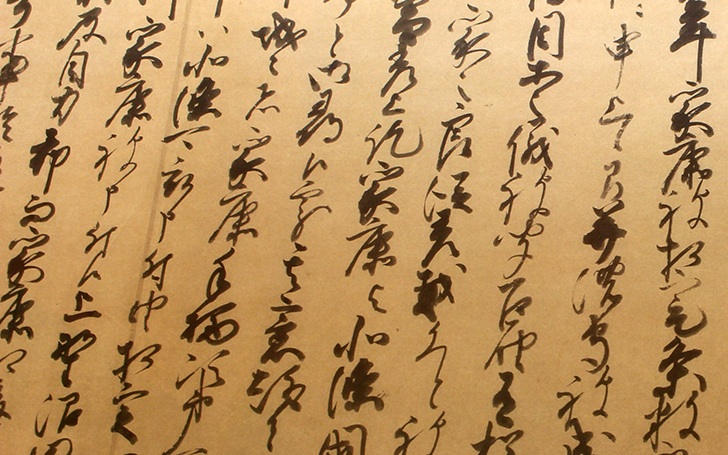4英語で説明したい日本1ちゃんこ鍋

色んな日本の物事を英語で紹介するタイピングゲームです
ブログに載せている英文日本紹介記事をタイピングゲームに徐々にアップしていこうと思います。タイピング通じて色々覚えて観光にお役立てると幸いです。よろしければチャレンジください。
日本語訳載せときます。
ちゃんこ鍋
ちゃんこ鍋は相撲部屋で食べられている鍋の事です。
ちゃんこ鍋は出汁を使わないちり鍋と、出汁を使う寄せ鍋があります。具材は肉、魚介類、野菜などです。相撲部屋では昔、負けをイメージする牛肉や豚肉は避けられて、肉は鶏肉がメインでした。今はそれらの肉も相撲部屋で食べられています。
明治終盤に横綱常陸山の相撲部屋で鍋が取り入れられて以降、鍋料理が相撲部屋の料理の代表になりました。ちゃんことは相撲部屋で食べられる料理の事ですが、その語源は父親を表す「ちゃん」から来るとも言われています。
相撲部屋ではちゃんこ鍋は「ちゃんこ番」という力士が作ります。多くのちゃんこ番は腕を磨き、引退後ちゃんこ鍋の店を開きます。
また有名力士やプロレスラーが引退後ちゃんこ鍋屋をすることもあります。
相撲という文化に引き継がれた伝統の味を楽しめる、ちゃんこ鍋を私は勧めます。
作ったタイピングゲームの一覧はこちらです。
https://typing.twi1.me/profile/userId/113751
あとブログのURLは下記に。関連記事と動画があるのでよろしければご覧下さい。英語ニュース以外もあります。
http://okakyutaro.blog.fc2.com/
日本語訳載せときます。
ちゃんこ鍋
ちゃんこ鍋は相撲部屋で食べられている鍋の事です。
ちゃんこ鍋は出汁を使わないちり鍋と、出汁を使う寄せ鍋があります。具材は肉、魚介類、野菜などです。相撲部屋では昔、負けをイメージする牛肉や豚肉は避けられて、肉は鶏肉がメインでした。今はそれらの肉も相撲部屋で食べられています。
明治終盤に横綱常陸山の相撲部屋で鍋が取り入れられて以降、鍋料理が相撲部屋の料理の代表になりました。ちゃんことは相撲部屋で食べられる料理の事ですが、その語源は父親を表す「ちゃん」から来るとも言われています。
相撲部屋ではちゃんこ鍋は「ちゃんこ番」という力士が作ります。多くのちゃんこ番は腕を磨き、引退後ちゃんこ鍋の店を開きます。
また有名力士やプロレスラーが引退後ちゃんこ鍋屋をすることもあります。
相撲という文化に引き継がれた伝統の味を楽しめる、ちゃんこ鍋を私は勧めます。
作ったタイピングゲームの一覧はこちらです。
https://typing.twi1.me/profile/userId/113751
あとブログのURLは下記に。関連記事と動画があるのでよろしければご覧下さい。英語ニュース以外もあります。
http://okakyutaro.blog.fc2.com/
関連タイピング
-
タイピング練習に関する長文です
プレイ回数23万 長文1159打 -
ヘタリアの歌詞タイピングです。
プレイ回数3240 歌詞かな762打 -
思ってたのがない悲しみ
プレイ回数678 歌詞かな344打 -
上級者向けタイピングゲームだよ
プレイ回数3.9万 長文かな822打 -
オーバーライド 重音テト
プレイ回数16万 歌詞かな208打 -
出来るだけ明るめの英文ニュースのタイピングです。
プレイ回数86 英語長文559打 -
テトリスサビ!!!!!!!!!!!!!!!!!!
プレイ回数13万 歌詞かな167打 -
M!LKのイイじゃん (フル)
プレイ回数2595 歌詞120秒
問題文
ふりがな非表示
ふりがな表示
(Chanko nabe)
Chanko nabe
(Chanko nabe is a hot pot eaten at sumo stables.)
Chanko nabe is a hot pot eaten at sumo stables.
(There are two types of chanko nabe: chirinabe, which does not use dashi, and yosenabe, which uses dashi.)
There are two types of chanko nabe: chirinabe, which does not use dashi, and yosenabe, which uses dashi.
(Ingredients include meat, seafood, and vegetables.)
Ingredients include meat, seafood, and vegetables.
(In the old days, beef and pork were avoided in sumo stables because of the image of losing,)
In the old days, beef and pork were avoided in sumo stables because of the image of losing,
(and chicken was the main meat.)
and chicken was the main meat.
(Those meats are now eaten in sumo stables.)
Those meats are now eaten in sumo stables.
(Since nabe was introduced in Yokozuna Hitachiyama's sumo stable at the end of the Meiji era,)
Since nabe was introduced in Yokozuna Hitachiyama's sumo stable at the end of the Meiji era,
(nabe cuisine has become a staple of sumo stable cuisine.)
nabe cuisine has become a staple of sumo stable cuisine.
(Chanko is a dish that can be eaten in a sumo stable,)
Chanko is a dish that can be eaten in a sumo stable,
(and it is said that the etymology comes from "chan", which means father.)
and it is said that the etymology comes from "chan", which means father.
(In sumo stables, chanko nabe is prepared by sumo wrestlers called chankoban.)
In sumo stables, chanko nabe is prepared by sumo wrestlers called chankoban.
(Many chankoban improve their skills and open a chankonabe restaurant after retiring.)
Many chankoban improve their skills and open a chankonabe restaurant after retiring.
(In addition, famous sumo wrestlers and professional wrestlers)
In addition, famous sumo wrestlers and professional wrestlers
(sometimes hold a chankonabe restaurant after retiring.)
sometimes hold a chankonabe restaurant after retiring.
(I recommend chanko nabe, where you can enjoy the traditional taste of sumo culture.)
I recommend chanko nabe, where you can enjoy the traditional taste of sumo culture.








